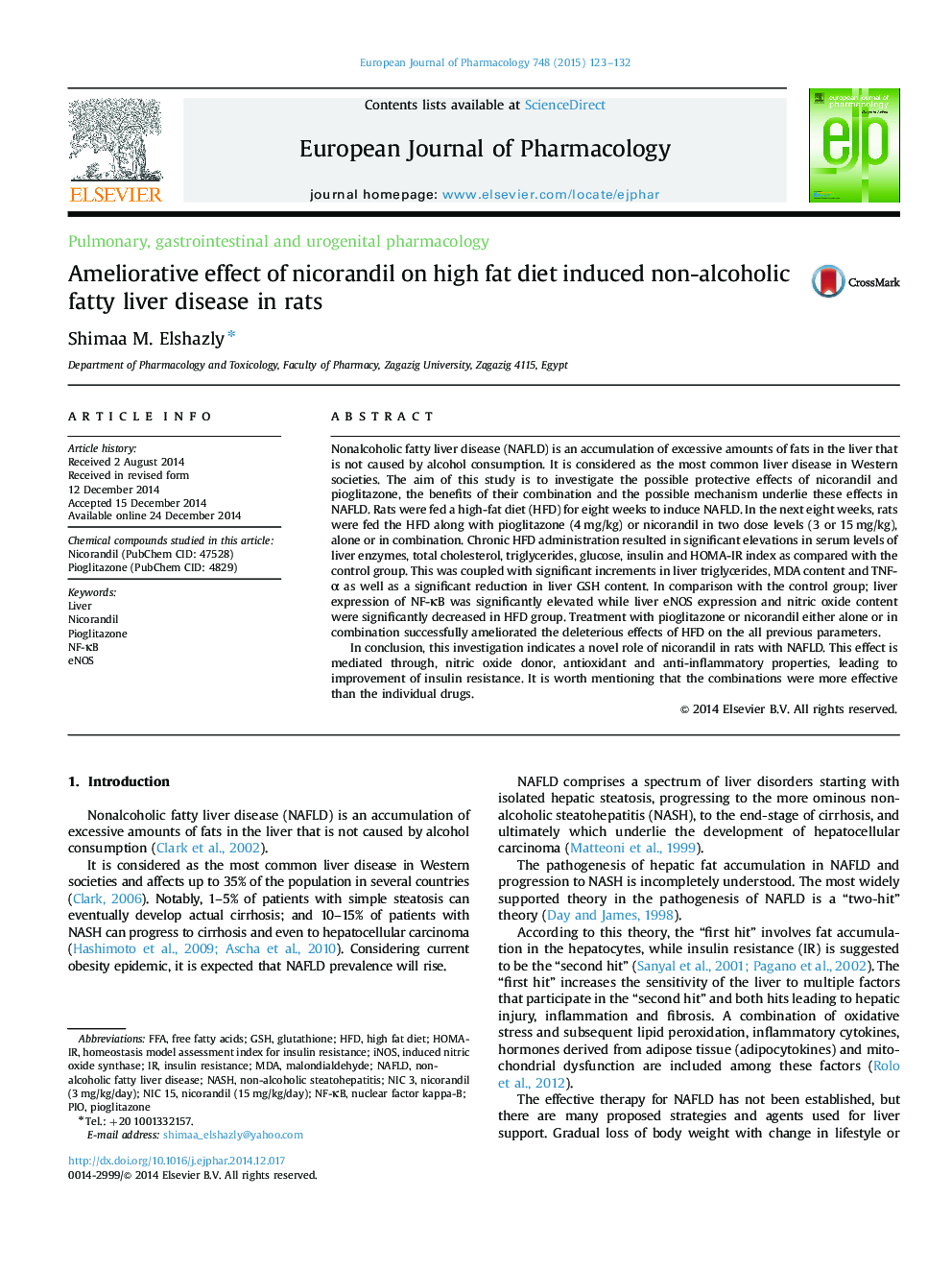| Article ID | Journal | Published Year | Pages | File Type |
|---|---|---|---|---|
| 2531537 | European Journal of Pharmacology | 2015 | 10 Pages |
Nonalcoholic fatty liver disease (NAFLD) is an accumulation of excessive amounts of fats in the liver that is not caused by alcohol consumption. It is considered as the most common liver disease in Western societies. The aim of this study is to investigate the possible protective effects of nicorandil and pioglitazone, the benefits of their combination and the possible mechanism underlie these effects in NAFLD. Rats were fed a high-fat diet (HFD) for eight weeks to induce NAFLD. In the next eight weeks, rats were fed the HFD along with pioglitazone (4 mg/kg) or nicorandil in two dose levels (3 or 15 mg/kg), alone or in combination. Chronic HFD administration resulted in significant elevations in serum levels of liver enzymes, total cholesterol, triglycerides, glucose, insulin and HOMA-IR index as compared with the control group. This was coupled with significant increments in liver triglycerides, MDA content and TNF-α as well as a significant reduction in liver GSH content. In comparison with the control group; liver expression of NF-κB was significantly elevated while liver eNOS expression and nitric oxide content were significantly decreased in HFD group. Treatment with pioglitazone or nicorandil either alone or in combination successfully ameliorated the deleterious effects of HFD on the all previous parameters.In conclusion, this investigation indicates a novel role of nicorandil in rats with NAFLD. This effect is mediated through, nitric oxide donor, antioxidant and anti-inflammatory properties, leading to improvement of insulin resistance. It is worth mentioning that the combinations were more effective than the individual drugs.
